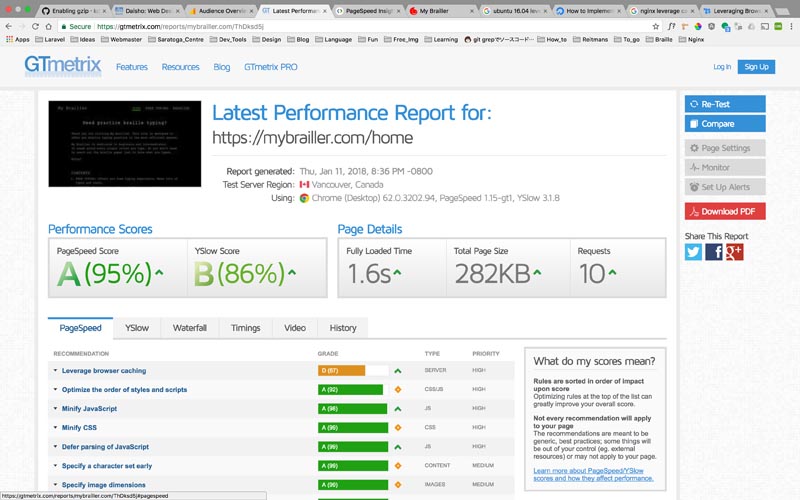Performance is the most important UX consideration
When you hear people around you discuss about UX, they often mean it's video embedding, parallax effect on homepage, beautiful full-sized photos or copy they think catchy to grab attentions. But those things are not appreciated as expected besides it rather destroy user experiences by forcing users to wait three seconds.
When you hear people say
We're customer-centric.
but if you find they are not doing maximum investment to improve site performance, they're probably having
money-first, customer-second (maybe third)
strategy model which eventually leads to losing number of users by destroying trust between themselves and users.
Leaving site performance as poor as rank F for more than six months proves enough they don't care users at all.
You should stop sweating on it if you don't get any help form marketing as it's not going to work on your own efforts. We definitely need work together.
I've been running a couple of websites and I admit they were not fast enough for me to complain other business models for being slow.
One of them is my portfolio site and its rank for PageSpeed was as bad as C (74%) and YSlow was also C (79%) on GTmetrix. I've tried a couple of tricks I knew to improve both of them but it seemed I've hit the ceiling at some point. It was some times ago.
But there's one more thing that I could apply. Leveraging caching; this was what GTmetrix suggested to me.
So I tried it. It was a bit intimidating to me as I'm still new to Nginx. But what would I lose if I fail? Leveraging Caching
I'm quite happy with the results and the fact that I didn't destroy my sites. I tweaked caching of 3 sites below.
Let's take a look one by one.
Portfolio site built on static HTML with a help from AngularJs(1.5)
PageSpeed: C (74%), YSlow: C (79%)

PageSpeed: C (93%), YSlow: C (89%)

Oh boy it's a hit!; Improving PageSpeed by 19% and YSlow by 10%
Blog built on Laravel5.5
PageSpeed: B (87%), YSlow: C (72%)

PageSpeed: A (92%), YSlow: C (73%)

Improvement for this site is not so impressive as it was originally not so bad; PageSpeed by 5% and YSlow by 1%. But it's ranked A for PageSpeed which is very satisfying :)
Braille typing practice app built on Angular4
PageSpeed: A (95%), YSlow: B (86%)

PageSpeed: A (98%), YSlow: A (93%)

This site is a unique one compared to others as it is a typing practice website for visually impaired users. It has less images but it runs tons of JavaScript as it is SPA. Improvement: PageSpeed by 3%, YSlow by 7%
It lands on A for both criteria. Nearly perfect :)
Keep seeking for room to improve your site performance is the quality of must-have as a developer today. There are tons of considerations for your sites to increase chances to appear on the first page in search engines and you still might hear SEO is the key for it.
Improving the page performance could be the best workaround for us to improve SEO. Modern search algorithm is designed to benefit all users by providing what they're looking up in a most effective manner. Good page speed shows the site is a good candidate for it.
A homepage with parallax effect taking 2.5 seconds to load is not only bad, but also proves the owner of the site doesn't care user's data usage and time.